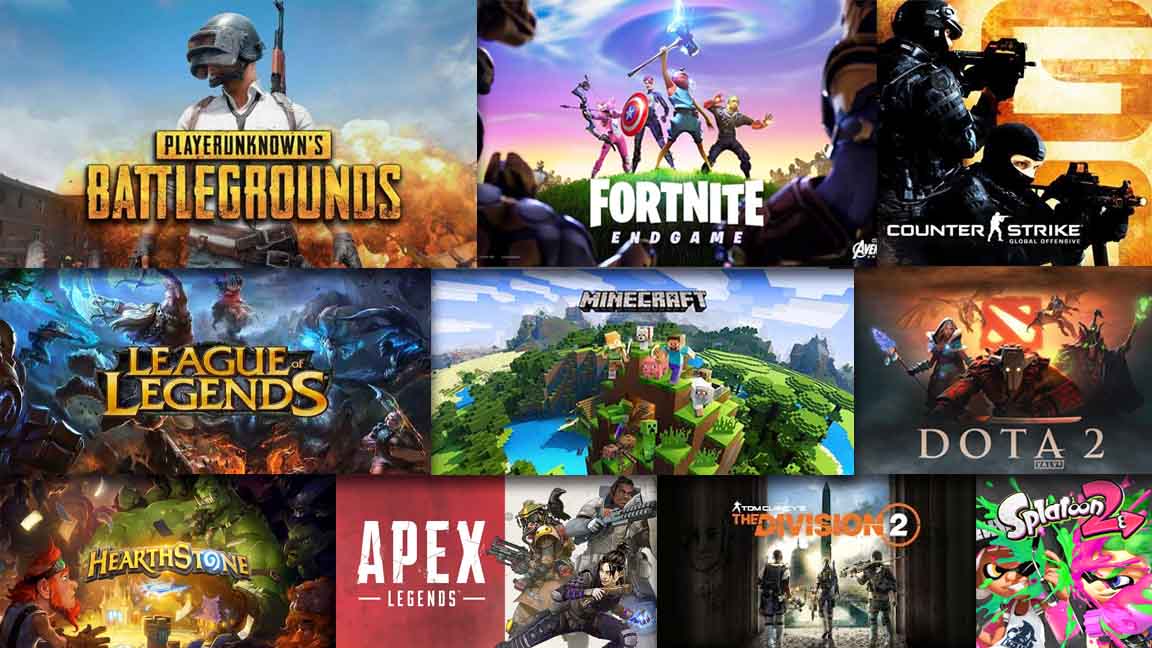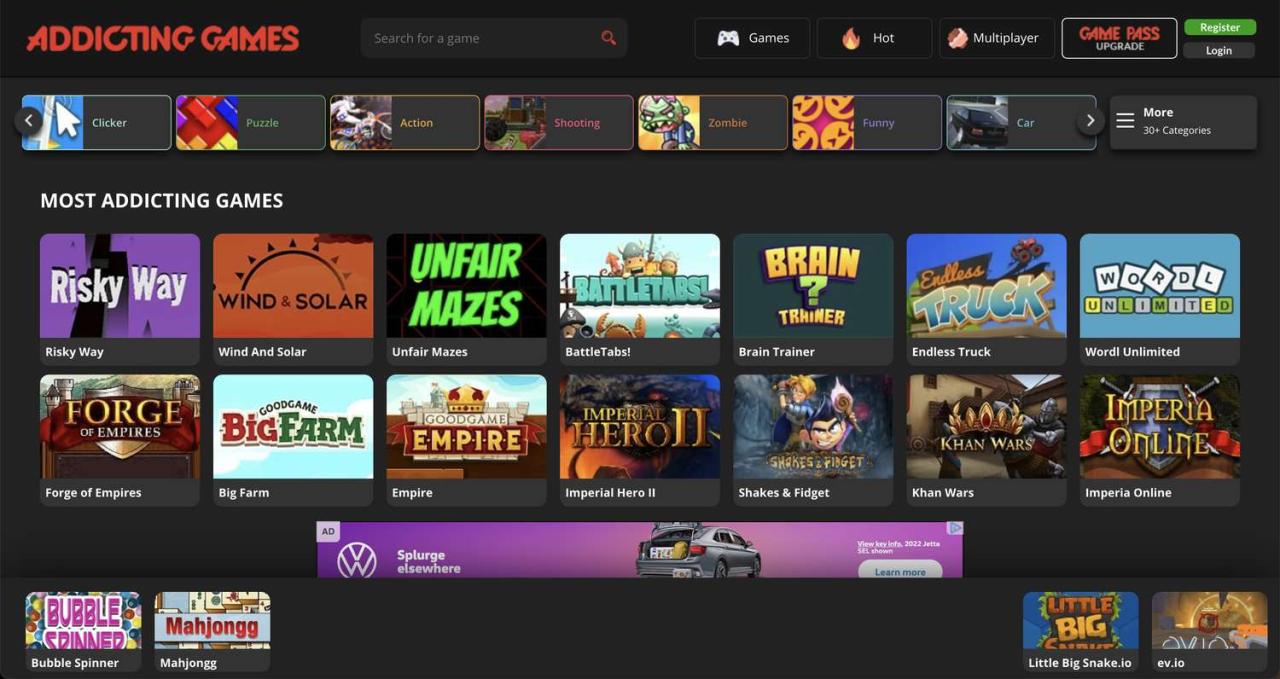Web games have transformed the gaming landscape, emerging from simple browser games into sophisticated HTML5 applications that cater to diverse audiences. The evolution of these games highlights not only technological advancements but also a shift in player expectations, making them distinct from traditional video games. Hosting platforms have played a crucial role, providing the necessary infrastructure for players to access and enjoy these interactive experiences at their convenience.
As we delve deeper into web games, we can categorize them into various types such as puzzle, action, strategy, and multiplayer, each offering unique gameplay mechanics that engage players in different ways. Popular titles in these categories showcase the creative potential of developers and the technological frameworks that support their development, pushing the boundaries of what web games can achieve.
Overview of Web Games

The landscape of web games has transformed dramatically since their inception, evolving from simple browser-based experiences to sophisticated HTML5 applications that can rival traditional video games in both quality and engagement. This evolution has redefined how players interact with games, allowing for a more accessible and immersive experience than ever before.
The journey of web games began in the late 1990s with basic offerings like “Minesweeper” and “Solitaire,” which were standard on many operating systems. These games relied largely on Flash technology, which allowed for more dynamic experiences than earlier text-based or static graphical games. However, with the decline of Flash and the rise of HTML5, web games have undergone a renaissance. HTML5 has facilitated the creation of more complex and visually appealing games that run seamlessly across devices without the need for additional plugins.
Key Features of Web Games
Web games distinguish themselves from traditional video games through several key features that enhance their appeal and functionality.
- Accessibility: Web games are playable directly in a browser, making them easily accessible across various platforms, including desktops, tablets, and smartphones. This eliminates the need for downloads or installations.
- Social Integration: Many web games incorporate social features, allowing players to connect and compete with friends through integrated platforms like Facebook or gaming networks.
- Continuous Updates: Developers can rapidly roll out updates and new content for web games, enhancing user engagement and addressing bugs or player feedback more efficiently than traditional games.
- Free-to-Play Models: A significant number of web games adopt a free-to-play model with optional in-game purchases, lowering the barrier to entry for new players.
Major Platforms for Web Games
The proliferation of web games has led to the emergence of several significant platforms that host and promote these digital experiences. Each platform plays a crucial role in shaping the web gaming ecosystem.
- Miniclip: One of the earliest platforms, Miniclip offers a wide range of casual games and has built a strong community around web gaming.
- Kongregate: Known for its indie game focus, Kongregate provides tools for developers to publish their games and offers players a chance to earn achievements and rewards.
- Newgrounds: This platform is not only a hosting site for games but also a community where developers can share their projects, receive feedback, and collaborate with others.
- Armor Games: Specializing in high-quality Flash and HTML5 games, Armor Games has established itself as a go-to site for gamers seeking well-crafted experiences.
The significance of these platforms lies in their ability to foster community engagement, support developers, and provide players with diverse gaming experiences. As web games continue to evolve, these platforms will remain essential in shaping the future of online gaming.
Types of Web Games

Web games can be classified into various categories, each offering a unique gaming experience influenced by gameplay mechanics and target audiences. Understanding these classifications not only helps players choose the type of game they enjoy but also aids developers in designing engaging and innovative games tailored for specific audiences. This section explores the main types of web games, providing insights into their gameplay dynamics and technological frameworks.
Puzzle Games
Puzzle games challenge players’ problem-solving skills, often requiring them to think critically and strategically to progress. These games typically involve logic, pattern recognition, or spatial reasoning. Popular titles include:
- Bejeweled: Players match gems of the same color in rows or columns, with a focus on quick thinking and strategic planning.
- Tetris: Players manipulate falling blocks to create complete lines, emphasizing spatial awareness and timing.
- Candy Crush Saga: This match-three puzzle game engages players with colorful candies and various levels designed with increasing difficulty.
These games often utilize frameworks such as HTML5 and JavaScript, enabling them to be played across multiple devices and platforms seamlessly.
Action Games
Action games are characterized by fast-paced gameplay that requires quick reflexes and hand-eye coordination. They frequently involve combat, physical challenges, and time constraints. Notable examples include:
- Slither.io: Players control a snake, consuming pellets to grow while avoiding other snakes, combining strategy with real-time competition.
- Agar.io: This multiplayer game involves players controlling a cell, consuming smaller cells to grow while avoiding larger ones, requiring quick decision-making.
- Super Mario Bros: Flash: An online adaptation of the classic platformer, featuring Mario navigating through obstacles to rescue Princess Peach.
Technologies like WebGL and Unity WebGL are commonly used to create immersive graphics and responsive gameplay in action games.
Strategy Games
Strategy games emphasize planning and skillful resource management. Players often build, manage, and expand their empires or territories. Examples include:
- Age of Empires Online: A real-time strategy game where players gather resources, build armies, and conquer opponents.
- Clash of Clans: Players build and upgrade their village, train troops, and engage in battles with others, requiring tactical planning.
- StarCraft II: Wings of Liberty: A highly strategic game focused on resource management and military tactics set in a sci-fi universe.
These games often leverage graphics engines like Phaser or Construct, enabling complex interactions and rich visual experiences.
Multiplayer Games, Web games
Multiplayer games allow players to engage with others in real-time, either cooperatively or competitively. They foster social interaction and often have elaborate community features. Examples include:
- World of Warcraft: A massively multiplayer online role-playing game (MMORPG) where players explore a vast world, complete quests, and interact with others.
- Among Us: A social deduction game where players work together to complete tasks while identifying impostors among them.
- Fortnite: A battle royale game featuring building mechanics and a vibrant, ever-changing world.
Platforms like WebRTC and Node.js are frequently used for real-time communication in multiplayer games, enhancing the gaming experience through seamless interactions.
The Future of Web Games

The landscape of web gaming is on the brink of a major transformation, driven by technological advancements and evolving player expectations. As we move into the next decade, the integration of new technologies will redefine how games are developed, experienced, and monetized. This growth promises not only to enhance gameplay but also to foster deeper connections between players and game developers.
The future of web gaming will be heavily influenced by ongoing developments in virtual reality (VR) and augmented reality (AR). These technologies have the potential to immerse players in ways that traditional gaming cannot, blurring the lines between the digital and physical worlds. For instance, VR can create fully immersive environments where players feel as if they are part of the game, while AR can enhance real-world interactions with digital overlays, enriching the gameplay experience.
Predicted Trends in Web Gaming Technology
The future of web games will likely see several key trends emerge, reflecting both technology advancements and changing player preferences. These trends are essential for understanding how gaming experiences will evolve.
- Increased adoption of cloud gaming technologies will allow players to access high-quality games without requiring powerful hardware, making gaming more accessible.
- Advancements in AI-driven game design will enable more personalized gaming experiences, adapting to player behavior and preferences.
- The integration of blockchain technology could revolutionize in-game economies, allowing players to own, trade, and monetize their in-game assets securely.
- Social gaming features will become more prominent, with an emphasis on community building and cooperative gameplay to enhance player engagement.
Impact of Virtual Reality and Augmented Reality
The integration of VR and AR into web games has the potential to create unparalleled experiences that redefine player interactions. These technologies allow developers to design games that engage players on a more visceral level, leading to greater immersion and emotional connection.
“The future of gaming lies in creating experiences that fully engage the senses, making players not just observers but participants in their adventures.”
AR can transform how players interact with their environments and each other. By superimposing digital elements onto the real world, AR can create engaging scavenger hunts, interactive storytelling, and live multiplayer experiences that blend physical movement with gaming. VR takes this a step further, offering environments that players can explore in three dimensions, interact with objects, and even engage in social experiences with other players across the globe.
Innovative Features to Enhance User Experience
As web gaming evolves, innovative features will play a crucial role in attracting and retaining players. These features can significantly enhance user experience, making games more engaging and enjoyable.
The following list Artikels potential enhancements that could reshape web gaming:
- Adaptive difficulty levels that adjust in real-time based on player performance, ensuring a balanced challenge for all skill levels.
- Customizable avatars that allow players to express their individuality and enhance immersion through personalized representation.
- Real-time collaboration tools enabling players to strategize and communicate seamlessly during gameplay, regardless of platform.
- Immersive storytelling techniques that respond to player choices, creating unique narratives that evolve based on in-game decisions.
- Integration of cross-platform play enabling users to connect with friends across different devices, enhancing community engagement.
Final Thoughts

The future of web games appears promising, with emerging trends in technology and player engagement set to reshape the gaming experience. The integration of virtual reality and augmented reality could revolutionize how we interact with web games, creating immersive environments that enhance user experience significantly. As innovations continue to surface, one can only imagine the exciting developments that lie ahead in the realm of web games.


